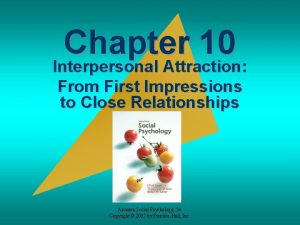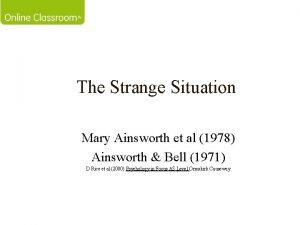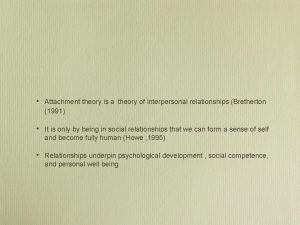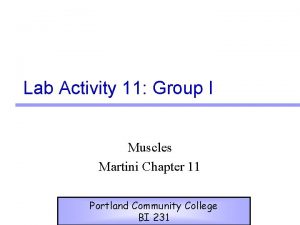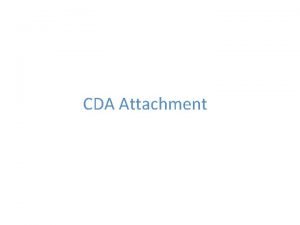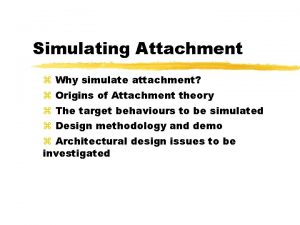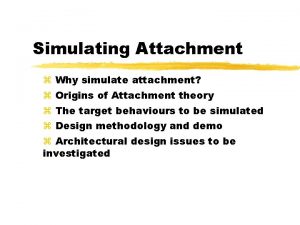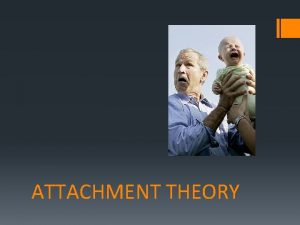Q Q 2 1 Attachment styles are a






- Slides: 6

Q. Q. 2 1. Attachment styles are: a. ways we satisfy our needs for belonging. b. where an individual stops and the rest of the world begins. c. social standpoints such as race, class, and gender. d. parenting patterns that teach us who we are and how to approach relationships. e. communication styles we use in our relationships with others.

2. "You are a very smart girl, " Tammy tells her daughter. Tammy's statement is an example of a(n): a. reflected appraisal. b. direct definition. c. identity script. d. self-fulfilling prophecy. e. social comparison.

3. The perspectives of the ____ other reflect the views generally held by others in a society. a. emotional b. generalized c. moral d. physical e. social

4. The views of ____ comprise the generalized other. a. our family of origin b. society as a whole c. our peers in school d. a person with whom we have an I-It relationship e. the persons with whom we have the closest relationships

5. A key foundation for improving your selfconcept is: a. setting difficult goals to attain. b. recognizing that the self is easy to transform. c. keeping ideas about change vague and abstract. d. knowing that you're the best you can be. e. accepting the self as in process.

T/F 6. Teachers, peers, and family members are all examples of particular others. 7. "A good education is the key to success" is an example of identity scripts. 8. Mothers spend more time that fathers with the children in caretaking activities. ESSAY 1. The Johari window contains four areas: open, blind, hidden, and unknown. Explain.

